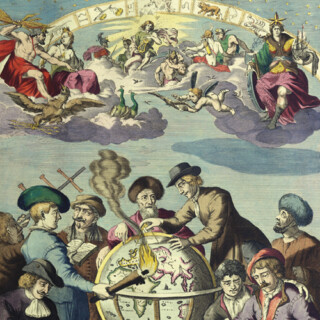Howard Vincent Map of the British Empire
Showing the Possessions throughout the World of the British People, their extent, population, and revenue By T.B. Johnston Geographer to the Queen. Dedicated to C. E. Howard Vincent, Esq., C.B., M.P. 1886
London,
1886
First edition. Large engraved wall map, fine original hand-colour, dissected and mounted on linen, inset map of British Possessions in 1786 housed in original red cloth slipcase lettered in gilt, light damp-staining to slipcase.
1570 by 1820mm. (61.75 by 71.75 inches).
2379
notes:
Scarce wall map of the British Empire.
The map shows the British Empire at its high water mark in the year 1886. Below the map is a table of 'possessions of the British People', which lists each country's size, population, and annual revenue. The 'Mother Country'- ie Britain - is said to have a population of 36 million, with an annual revenue of £90 million; India and Burma with a population of 257 million, has the second largest revenues of £74 million; the smal...
The map shows the British Empire at its high water mark in the year 1886. Below the map is a table of 'possessions of the British People', which lists each country's size, population, and annual revenue. The 'Mother Country'- ie Britain - is said to have a population of 36 million, with an annual revenue of £90 million; India and Burma with a population of 257 million, has the second largest revenues of £74 million; the smal...
bibliography:
provenance:








